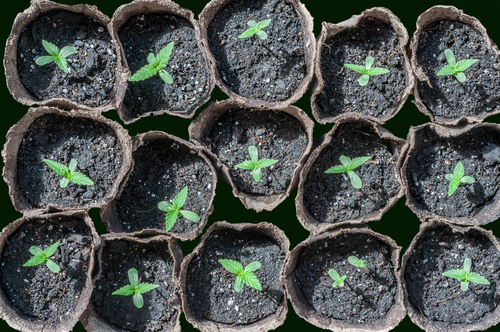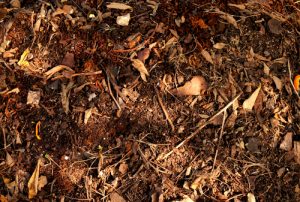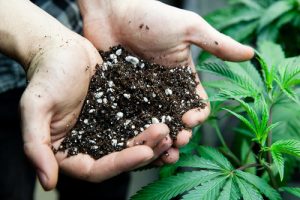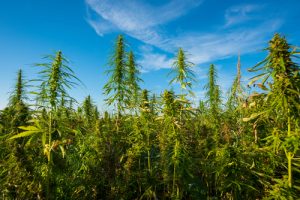How To Grow Organic Marijuana
Posted 7 years ago by Sera

Not all cannabis was created equal: a truth that growers and consumers alike have had to accept. Some marijuana is GMO – some of it is simply full of chemicals – and of course, at least one of your annoying vegan friends will tell you that the weed you smoke is not vegan-friendly. Yes, some of the herb you pick up from the local dispensary is delicious and strong but unfortunately, nothing sustainable is going on at that growing operation. These are the kinds of things that make people want to grow marijuana at home. And to be extra fancy, they want to grow organic marijuana. So why oh why does there need to be another organic movement to use something that is already vegetarian – gluten-free – non-dairy – plant material! Here me out. There are more reasons than you think.
For anybody who has any interest in cannabis, isn’t it a beautiful thing that we live in the day and age of growing marijuana legally? This means knowing what actually goes into it, how it is grown, to be sure we aren’t smoking chemical material nor killing the planet while we do it. If only we could say the same for tobacco! No need to ingest chemicals, no need to spend a lot of money on dope and most importantly, you get the satisfaction of growing your own organic cannabis.
Free from chemicals, pesticides, and insecticides
You would be surprised to know how many chemicals are used in the process of growing a lot of the weed we consume. Chemicals are not just limited to the growing period either but are even used in the grow room between grow cycles. For example, Bifenthrin is a product used to clean grow rooms between cycles to prevent spider mites. This stuff sticks on light fixtures, ventilation and totally pollutes the air inside the grow room. Yes – it completely ends up in your weed.
Bifenthrin isn’t the only one, of course. Many growers are using chemical pesticides during the grow cycle and trying to flush them out of the plants before harvesting. However, many of these chemicals are still traceable in the final product. Many of us are becoming more conscious not to eat food products that are loaded with chemicals, but we don’t often think about the chemicals we smoke in to ourselves. And from what science has told us, smoking chemicals is much more harmful to the body than orally ingesting.
Whereas there is microbial life in our stomachs that are designed to protect us from toxins and therefore help us to release some of the foreign material we ingest, our lungs don’t have that kind of technology. We are far less protected from toxins that we inhale into our lungs than those we eat. So, in fact, it’s far more dangerous to be ingesting chemically sprayed weed than it is to be eating chemical salts such as MSG!
Interestingly, the chemicals that are present in the marijuana you smoke also contribute to flavor and high. Sometimes you get that really harsh flavor with weed – residual chemicals maybe? Sometimes you get the sweats, but nothing is really going on on a cerebral level or in terms of a physical high – un-flushed pesticides, perhaps? At the end of the day, organic marijuana tastes better, smells better and doesn’t hurt the environment it grows in.
Now to get down to the real business. How does one actually grow organic marijuana?
Starting with making your own soil

What’s going to make your organic grow operation successful is good, powerful, organic soil. It needs to be alive. Non-organic grow rooms are basically sterile, meaning that there is no microbial life in the soil producing nutrients for plants. The true blue way to grow organic marijuana is to make your own organic soil. This can take anywhere between two and five months, but it’s worth it for growing some dope organic dope. There are composting companies all around the place who can sell you some pre-made, composted super soil. But I’m going to tell you how to make your own, anyway.
First things first, buy a compost bin. It’s the easiest way to keep everything where it needs to be as well as to generate enough heat to turn your compost materials into soil. You’re going to be making a delicious concoction of carbon and nitrogen. The best carbon-rich materials to use are:
- Sawdust
- Pine needles
- Woody plant parts (such as shrubs, branches etc)
- Dry leaves
- straw
The most nitrogen-rich materials to use are:
- Corncobs
- Nutshells
- Fruit seeds/pips
- Tea and teabags
- Vegetables
- Coffee grounds
- Rinds and cores
You can also use animal manure, eggshells, feathers, hair and fur for nitrogen in your mix. But for the sake of this article, I decided to keep the vegans happy and make this a very vegan-friendly recipe for growing marijuana.
You’re looking to create a compost soil that has a ratio of about 30 parts carbon to 1 part nitrogen. You can find carbon-to-nitrogen ratios for the products you plan to use for your composting online, and from there you can calculate which materials are good to use with each other. The mathematics is not that complicatied. The ratios of all the materials you used added together divided by the number of materials you used.
For example, the carbon-to-nitrogen ratio of dry leaves is 50:1. The ratio of coffee is 12:1. Together, they make 62:2. We used two materials for this concoction, so dividing that final ratio by two gives 31:1. It’s almost exactly the ratio we were looking for! For how much to use, simply follow this formula: add two parts of nitrogen material to one part of carbon material. So, if you finally decided to go for coffee and dry leaves to create your compost, add one part of dry leaves to two parts of coffee.
When it’s time to start filling up your compost bin, use your nitrogen-rich materials on the bottom. The second layer can be your carbon-rich materials. Your third layer should consist o something that is going to kick-start the whole process or invite all those micro-organisms to the party to start decomposing for you. Some people add blood meal or bone meal, but I wanted this to be vegan-friendly, remember? You can use alfalfa or even a layer from an old compost pile that was already activated. Repeat this layering process until your compost bin is full.
Now be patient and wait until your compost has decomposed into organic super soil. Turn it at least once a week and at most once every three days. You’ll know it’s ready when it’s black, crumbly, soft and smells sweet! The growing medium is one of the most important factors of growing organic marijuana. So don’t worry that it takes some time to create. It will already be nutrient rich so that you don’t have to feed your plants too many nutrients in the future.
Make your soil organically, nutrient rich

Now is time to try a fertilizer recipe that was created by Subcool, breeder of TGA Genetics. In this version of the recipe, all blood and bone meal has been replaced by alfalfa meal – just to really push the boundaries of organic. No meat industry products in this soil, my friends. Once this is done, you’ll be ready to start planting your ganja seeds.
- Spread out some of the composted soil in a kiddy pool.
- On top of it, throw coco fiber and mychorrizae.
- On top of that, throw .75kg of phosphate, 1/8 cup Epsom salts, 1/4 cup azomite, 1/2 cup sweet lime dolomite, and 1 tablespoon of powdered humic acid.
- Now add another layer of composted soil.
- Add 1 kg of bat guano (ethically harvested, of course), another layer of composted base soil, and then cover it with 1 kg layer of alfalfa meal or kelp extract
- Mix everything together and transfer it into garbage cans that have 10 L of water in them. Let them cook in the sun for a few weeks and get all that microbial life moving.
When filling your pots with soil, you can make the bottom layer out of this fertilizer recipe and the top two layer of your simple, composted soil.
Making compost teas
If during the grow cycle, your plants need supplemental feeding and nutrients, there’s no need to feed them chemical nutrient products that have been produced in a laboratory. You’ve already made your own vegan soil. You don’t need to go buying nutrients. It’s extremely simple to create compost tea, and it’s great for spraying on your plants to give them a little extra nutrition.
- Add some water to a large bucket, at least 5 gallons
- Use a bubbler to oxygenate the water inside the bucket and enrich the process
- Fill up a pillowcase or cheesecloth with compost, bat guano and two tablespoons of molasses.
- Steep it in the oxygenated water for a few days.
- Use your compost tea immediately and don’t save it for the next feeding
Companion planting and natural pest control

As you can already tell, time is the biggest factor that pushes growers towards using chemical solutions for their garden problems. Of course, it takes time to make your own soil. Of course, it takes effort to make sure that your fertilizer isn’t a bunch of pallets that look like rat poison. But rest assured, all of your hard work will be rewarded when you are smoking your own organic marijuana.
When it comes to natural pest control, the best way to handle it is with companion planting. It is a permaculture method by which you grow other plants in your marijuana garden to deter the pests that like to come and say hello. For example, there are many pests such as white flies who don’t like the smell of marigolds. Plant marigolds around your cannabis garden as a pest solution. Cilantro repels spider mites and aphids, as does garlic. In fact, you can turn your marijuana garden into a fully fledged herb garden at the same time!
You can use this recipe as a natural pesticide in the case that you find you have an insect infestation and need to do some immediate pest control:
- 5 drops marigold oil
- 5 drops rosemary oil
- 5 drops eucalyptus oil
- 5 drops peppermint oil
Mix them into one gallon of water and spray them on your plants. It should send mites, aphids and other insects running.
You will be able to use your soil over and over again because it contains all of the microbial life necessary for happy plants. In fact, it is the kind of soil that makes weed grow like a weed! As long as you look after your soil and maintain its health (as well as create more compost piles during your grow cycle), you’ll never need to buy chemical products from garden stores. In no time, you’ll be a connoisseur of organic marijuana growing! And everybody will want to smoke your dope!